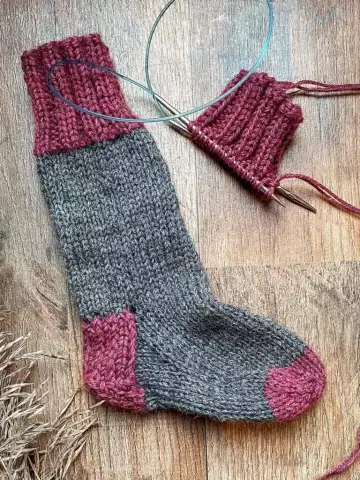A stationary circular saw has significantly greater capabilities compared to a manual device. It allows you to cut material of various sections, cut sheets of plywood or hardboard. In order to turn a hand-held circular saw into a stationary circular saw, you will need to build a special device in the form of a table.

It is necessary
Steel plates; saw blade; screws; countersunk screws; bars; boards
Instructions
Step 1
Make the bed of the circular machine. It consists of trestles and boards measuring 50x150 mm.
Step 2
Attach a table from above to this base. Assemble it from two rectangular steel plates 200 mm wide and 4 mm thick. Tie the steel strips together with plywood jumpers with a thickness of 20-25 mm using screws. Leave a gap of about 10 mm between the table parts. When assembling, ensure that the inner layers of the plates are strictly parallel.
Step 3
Attach the saw blade to the table from below so that the saw blade is exactly in the middle of the gap between the blades and is parallel to it. Secure the saw to the table in this position through the holes pre-drilled in the plates and in the base plate.
Step 4
To ensure a smooth surface of the table, countersink the holes in the base plate from the front side, and tighten the entire structure with countersunk screws.
Step 5
Screw the assembled table to the bed with screws or screws and nuts, insert an insert with a slot for the saw blade into the gap between the plates. The circular saw is now ready for use. When working on the saw, attach the stop bar to the table with clamps.
Step 6
As an accessory, make a carriage, with which you can extremely simplify such work as trimming workpieces and sawing them "mustache" at an angle of 45 degrees. Attach guide bars to the plywood sheet with glue and screws, the distance between which should correspond to the width of the circular table. Install the stop bumpers on top. Place the carriage on the table. When the machine is running, the carriage is fed along the guides onto the disk, making a cut through the entire device. Since the sides significantly exceed the saw blade exit, the carriage has sufficient rigidity.
Step 7
When trimming the workpieces, press them against the stop flange and move the carriage longitudinally along the table. To make a "mustache" connection, use a removable bar, setting it at an angle of 45 degrees and pressing the workpiece against it.






